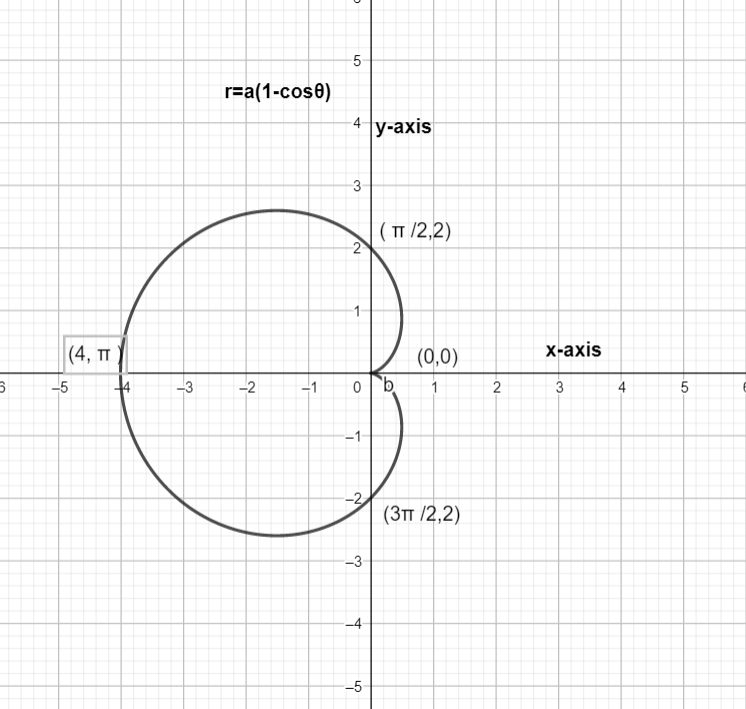Question
Question: How do I graph cardioid \[r=a\left( 1-\cos \theta \right)\]?...
How do I graph cardioid r=a(1−cosθ)?
Solution
We will use polar coordinates concept to draw the graph. Here we have to generate the table for different known values of θ to find r. As we already know that the polar coordinate graph will contain points as (r,θ) we will plot the graph. The value of a can be any random variable.
Complete step by step answer:
Before going to draw the graph lets know about cardioids.
A cardioid is a plane curve traced by a point on the perimeter of a circle that is rolling around a fixed circle of the same radius. It can also be defined as an epicycloid having a single cusp. It is also a type of sinusoidal spiral, and an inverse curve of the parabola with the focus as the center of inversion
For horizontal cardioid the equation will look like
r=a±acosθ
For vertical cardioid the equation will be like
r=a±asinθ
Given equation is
r=a(1−cosθ)
We can see it is in the form of a horizontal equation. So we will get a horizontal cardioid from our equation.
So to plot a graph first we have to create a table for the values (r,θ) .
For this we will take the θ values in the range between 0 and 2π.
0≤θ<2π
So now will find r values for these θ values 0,2π,π,23π,2π.
To draw the graph let us assume value of a as 2
| θ | r=a(1−cosθ) |
|---|---|
| 0 | 0 |
| 2π | 2 |
| π | 4 |
| 23π | 2 |
| 2π | 0 |
So using these values we can draw the graph of the given equation.
The graph that obtained is

This is the cardioid graph of the equation r=a(1−cosθ).
Note: We can see the change in the area and perimeter of the graph by changing the values of a. We can find area, perimeter, arc length and tangential angle. But if the value of a we have chosen is not a circle radius then the envelope formed is a limacon.
